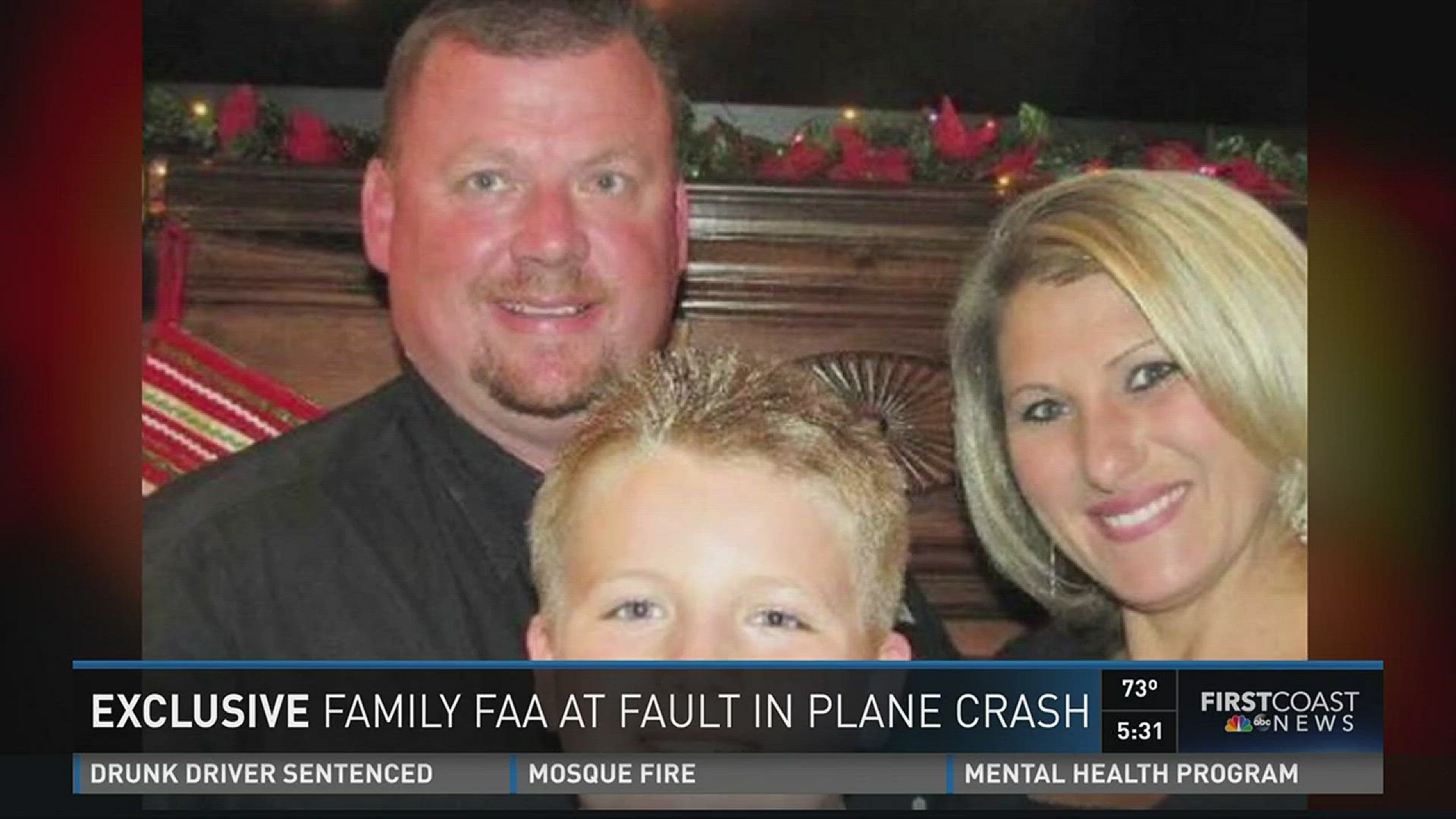Three people died in a plane crash headed from north Florida to Tennessee just after Christmas last year. Now, the Federal Aviation Administration may be found culpable in their deaths, if a recent suit filed against them is found to have merit.
David Starling, 41, his 8-year-old son Hunter and 42-year-old Kim Smith died when the Cessna 182 aircraft Starling was flying crashed into an unnamed ridge in the Great Smoky mountains. The trio is from Bradford County and they were going on vacation.
First Coast News has learned surviving family members have filed papers with the FAA arguing air traffic controllers failed to monitor the flight and are to blame for the crash.
Reports released since the crash say weather conditions in the area were poor and suggest the pilot wasn't flying with the correct instrumentation. The family was flying in a fixed-wing, single-engine aircraft when they went down. They were headed from Keystone Heights to Gatlinburg, Tennessee, the day after Christmas.
Kim Smith's adult son says he didn't like the idea.
"Mom told me they were thinking about it," says Garrett Smith. "I told her I wished they'd just drive."
In new documents filed with the FAA, Smith claims the air traffic controllers failed to monitor the plane's altitude. The claim says when the plane went off radar it was below the minimum allowed altitude - flying at 5,400 feet abeam Mounte Conte, which was almost 1,200 feet higher.
It says an air traffic controller failed to ask the pilot if he could see the terrain in sight or had appropriate flight instruments for the conditions and was required to do so. This matters because the pilot wasn't using a radar. Starling was instead flying under Visual Flight Rules - permissible when weather conditions are good and a pilot can fly a plane with the naked eye.
The filing says after the plane disappeared from radar - and had likely crashed in the Great Smokey Mountains - an air traffic controller asked the plane to switch to the local airport frequency.
It says the tower never got a response from the plane and made no additional attempts to contact it. The first hint of disaster came from an emergency locator beacon.
Lieutenant Colonel Evan Gardner runs the Air Force Rescue Coordination Center, a small but important group that coordinates efforts to find lost civilian planes all over the country.
"The g-force of the crash caused [the emergency beacon] to go off and the satellite picked it up," Gardner says.
When trying to find the lost plane, Gardner says his group uses any tool they can get their hands on. "Our primary tool is actually Google Earth," he explains. "We go in and make overlays so we can track all of the resources."
From a small room, a group of four to six airmen activate and coordinate planes, helicopters and search teams anywhere in the U.S. They work multiple cases at the same time.
Last year, this unit investigated 8,000 emergency beacons - only 10 percent end up with someone in distress.
Major Sarah Hendrick worked the Starling case. "Our radar forensics and our cell phone forensics were our most useful pieces of information for this particular investigation," she says. Hendrick combined the final radar blip of the plane with signals from Smith and Starling's cell phones.
"It was a very dangerous location too because of the terrain," she explains. "It was mountainous and there were no trails that led directly to where we believed the aircraft to be."
She dispatched a civil air patrol surveillance plane and specially trained park rangers. New reports filed with the FAA say a helicopter ultimately found the crash site.
"I wish I would have known so we could have fished one more time or I could have talked to her a little bit more," Garrett says of his mother. He traveled to Tennessee after the plane went missing and he hadn't heard from his mother.
In his filings with the FAA, he says failures by controllers to provide radar assistance and keep the plane clear of the mountain caused or contributed to his mother's death.
"Not a day goes by I don't think about her or talk to her," he says. "Mom and I were best friends by far."
The National Transportation Safety Board has not released their final report on the crash. We reached out to the FAA for a comment on the claim filed but they haven't gotten back to us. The plane was taken from the mountainside for further investigation.

